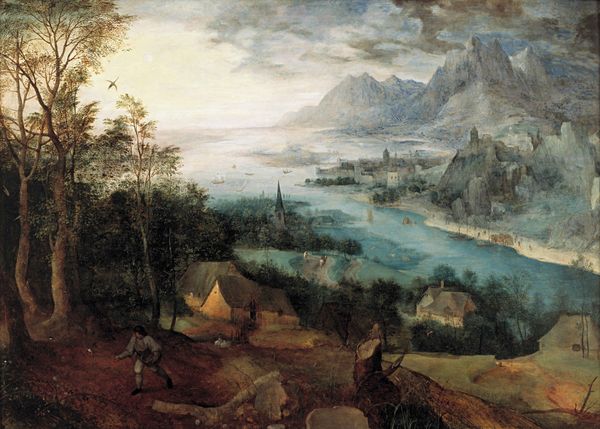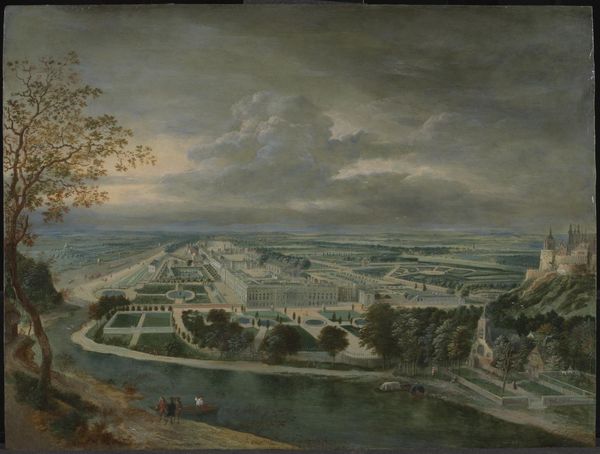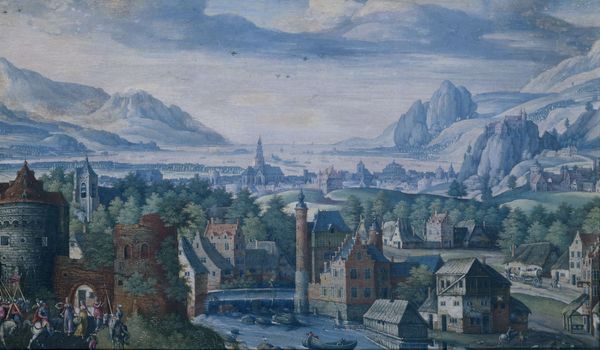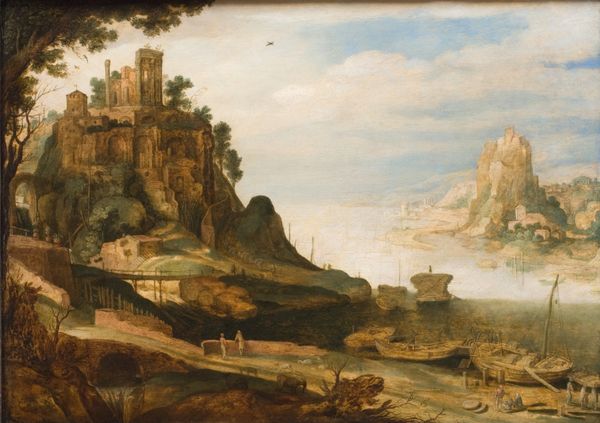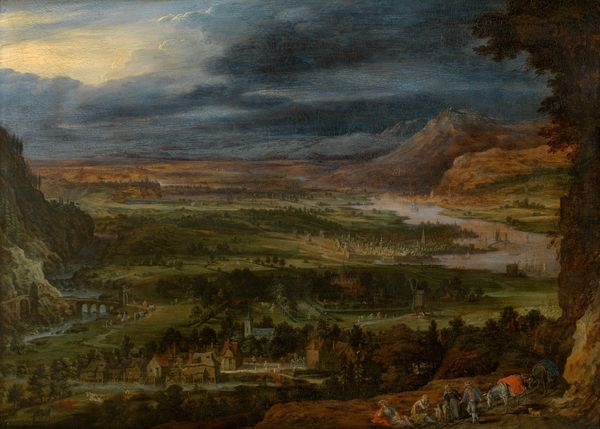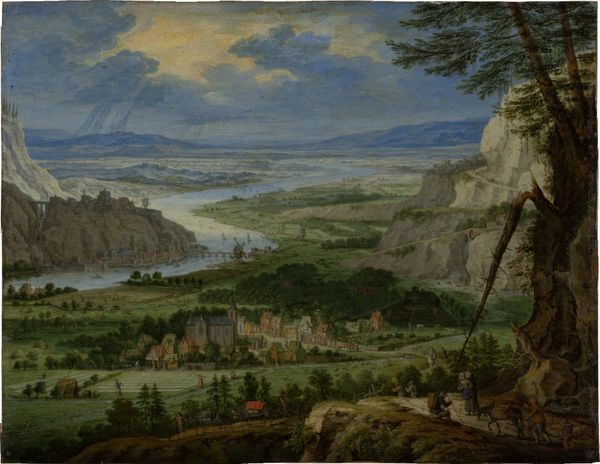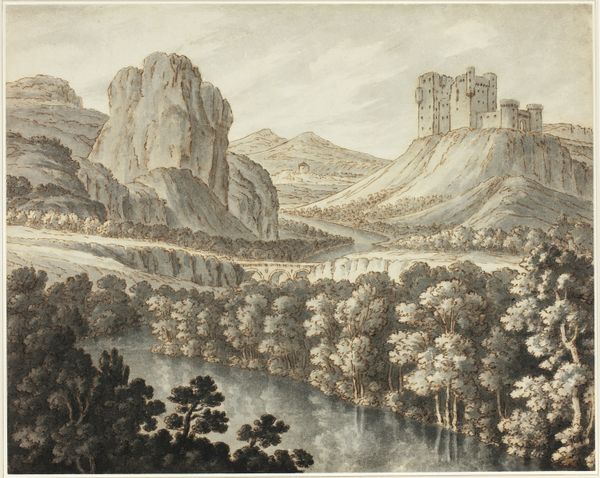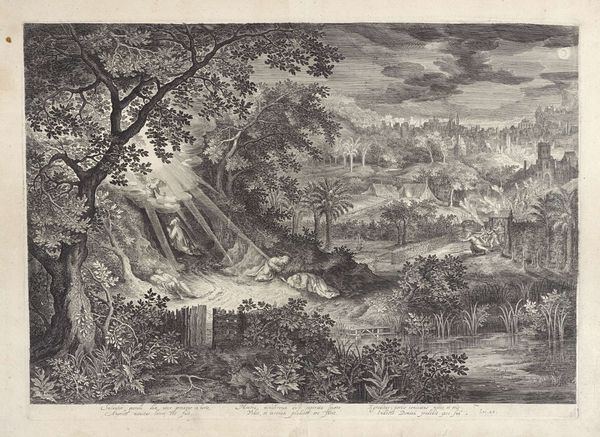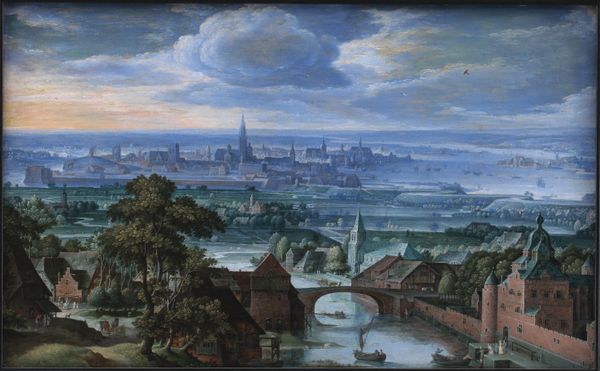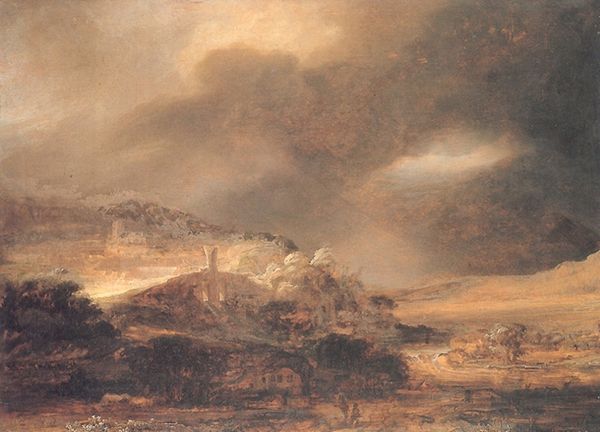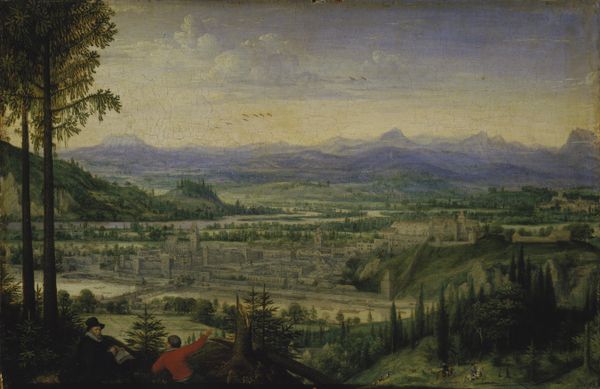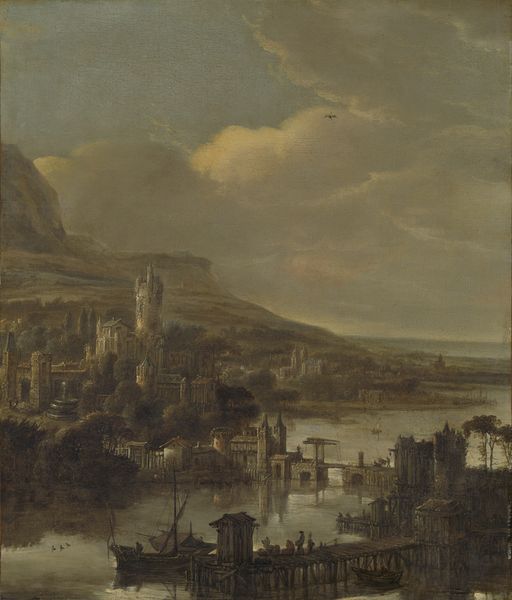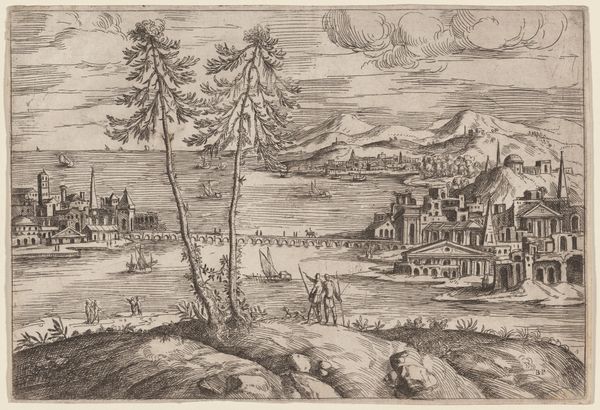
plein-air, oil-paint
#
sky
#
baroque
#
plein-air
#
oil-paint
#
landscape
#
figuration
#
oil painting
#
mountain
#
natural-landscape
#
painting painterly
#
cityscape
Copyright: Public domain
Editor: This is Tobias Verhaecht's "Landscape," painted in 1615, using oil on... well, I’m not sure what the support is. The overall effect is dreamlike, but almost… staged? It’s quite an elaborate scene. What do you make of it? Curator: Well, considering the social and cultural context, these seemingly "natural" landscapes often served as expressions of power and ownership. Look at the prominent castles and distant cityscape. Do you think this painting is a representation of an actual location, or perhaps an idealized one? Editor: Idealized, definitely. The scale is off, and those rock formations feel… theatrical. Curator: Precisely! And the theatricality is key. It wasn’t simply about representing nature, it was about demonstrating dominion over it. Consider the patronage system. Verhaecht likely created this for a wealthy patron, perhaps even nobility, who wished to be associated with such grandeur. Editor: So, it's not really about nature, but more about status and control. The placement of the heraldic crest right at the top reinforces that idea. Were landscapes generally commissioned to showcase status? Curator: Frequently, yes. Land ownership was a major source of power. By commissioning such a landscape, the patron visually reinforced their authority and projected an image of cultivated refinement. Notice, even the "natural" elements appear carefully arranged, serving to project control. Editor: That makes a lot of sense. I was initially drawn to the composition but viewing it through that lens changes the whole interpretation. It feels less like admiring nature and more like witnessing a power play. Curator: Indeed. The museum’s role, therefore, becomes crucial. It presents art like this and prompts a contemporary audience to confront those historical power dynamics. The visual appeal draws viewers in but the art historical context asks us to reflect on deeper meanings. Editor: That's really insightful. Thanks for pointing out the historical context and patronage behind this kind of painting!
Comments
No comments
Be the first to comment and join the conversation on the ultimate creative platform.
